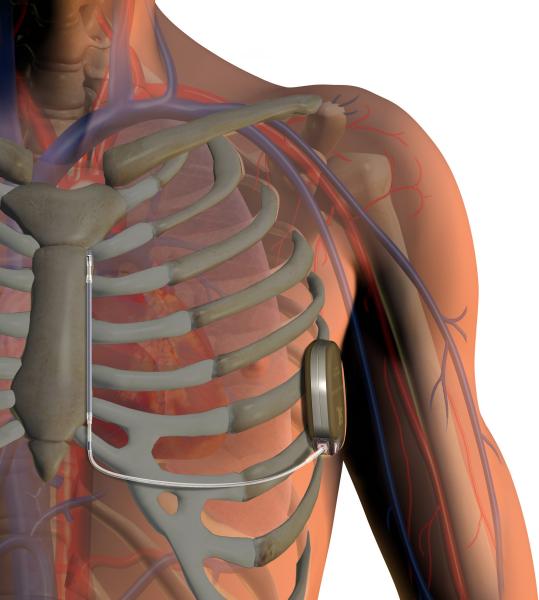Comparing mechanical prosthetic and bioprosthetic mitral valves, a study in the April 14 issue of the Journal of the American Medical Association (JAMA) found no significant difference in long-term survival. Researchers did discover differences in risk of reoperation, bleeding and stroke.
3D Systems announced that a 20-month-old toddler is breathing and swallowing easier thanks to a team of cardiologists and cardiothoracic surgeons at Washington University School of Medicine in St. Louis. The team used a full-color 3-D printed replica of his heart to prepare for a delicate, 2.5-hour procedure at St. Louis Children's Hospital.
Although ultrasound remains the primary imaging modality used in prenatal imaging, fetal magnetic resonance imaging (MRI) is playing an increasing role in further evaluation of fetuses suspected of congenital anomalies. As 3-T MRI scanners become more common due to their improved image signal-to-noise ratio and anatomical detail, the benefits of 3-T MRI must be weighed against potential risks to the fetus that may result from the higher field strength.
Providing exceptional cardiovascular care for patients to achieve the best possible outcomes is the number one goal for ...
At HIMSS 2015, one of the biggest trends was the explosion of consumer health related wearable devices and smartphone ...
During HIMSS 2015, Louis Lannum, director, ITD enterprise imaging, information technology division, Cleveland Clinic ...
Mony Weschler, chief applications strategist and architect, application technology services, Montefiore Health System ...
Cardiac positron emission tomography (PET) is growing in popularity among cardiologists because it provides the ability ...
A study published in JACC: Cardiovascular Interventions showed that in-hospital and 30-day stroke or death rates were equally low with either a distal filter embolic protection device (F-EPD) or a proximal EPD (P-EPD) to protect patients from blood clots during carotid artery stenting. A small sample size for one device, however, raises questions on the study’s ability to detect potentially meaningful differences in outcomes.

The Journal of the American College of Cardiology published data confirming the long-term safety and efficacy of the Boston Scientific Corp. S-ICD System (subcutaneous implantable defibrillator) for patients at risk of sudden cardiac arrest.
The American Society of Radiologic Technologists (ASRT) has launched new online products to help members improve safety practice and dose reduction techniques for computed tomography (CT) and magnetic resonance imaging (MRI), in line with revised requirements from The Joint Commission.
When performing radiofrequency (RF) ablation to treat cardiac arrhythmia, medical professionals must balance the safety ...
The Centers for Medicare & Medicaid Services (CMS) introduced star ratings on the Hospital Compare public information website to make it easier for consumers to choose a hospital and understand the quality of care they deliver.
A new study from digital data collection provider Research Now looks into the use of mobile health apps and assesses their potential in healthcare. Research Now spoke to 500 healthcare professionals and 1,000 health app users in the United Kingdom.

Nuclear myocardial perfusion imaging (MPI) with positron emission tomography (PET) and single-photon emission computed tomography (SPECT) have been the gold standard for noninvasive detection of coronary ischemia and infarcts. However, the high radiation doses patients receive are making some providers think twice before referring their patients for nuclear MPI.
Change Healthcare Cardiology Hemodynamics is an integrated hemodynamic monitoring system for monitoring vital signs and ...
Contego Medical announced the completion of a $5.6 million Series B financing round, led by Hatteras Venture Partners. Hatteras is an early stage venture firm with a focus on medical devices, biopharmaceuticals, diagnostics and related opportunities in human medicine. The round also included Mountain Group Partners, Lookout Capital and Medical Mutual.
Penn Medicine’s Penn Care at Home program reported a 53 percent reduction in 30-day readmission rates for 130 congestive heart failure patients since implementing software from Health Recovery Solutions. Readmission rates dropped from 8 percent to 3.8 percent over a period from July 2014 to February 2015.

The Healthcare Information and Management Systems Society (HIMSS) released the results of the 2015 HIMSS Mobile Technology Survey. This year’s study, of more than 200 healthcare provider employees, found that nearly 90 percent of respondents are utilizing mobile devices within their organizations to engage patients in their healthcare. The report also showed that respondents believe that mobile health (mHealth) technologies are beginning to drive cost savings and improve the quality of care delivered.

 April 22, 2015
April 22, 2015










